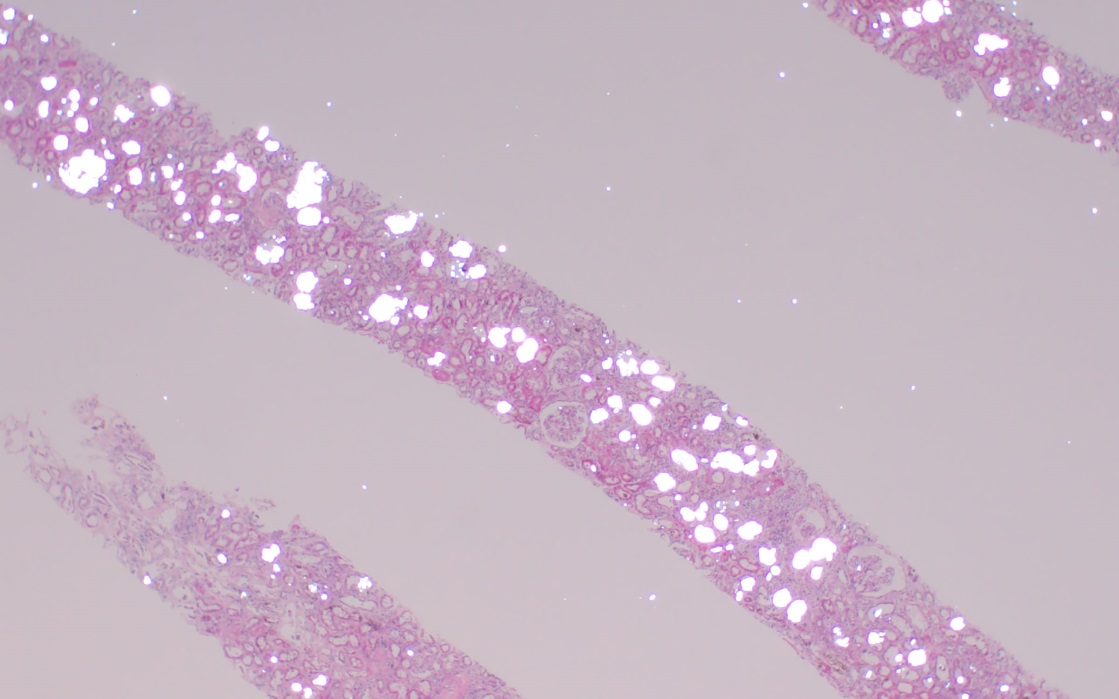Case Presentation: A 54-year-old man with metastatic melanoma presented to the hospital in acute renal failure. Nine months prior, he was diagnosed with metastatic melanoma and offered immunotherapy. He declined in favor of naturopathic treatment, including high-dose intravenous vitamin C. At his naturopathic clinic, he was found to be hyperkalemic and was referred to our hospital. Physical exam revealed an encephalopathic, cachectic man with slate-grey discoloration of the skin and profound anasarca. Initial labs revealed a creatinine of 9.5 mg/dL, blood urea nitrogen of 85 mg/dL and potassium of 7.5 mmol/L with QRS widening on electrocardiogram. He underwent emergent hemodialysis. Further workup noted nephrotic-range proteinuria with hematuria, negative viral hepatidities, aspartate aminotransferase of 172 U/L, alanine aminotransferase of 115 U/L, total bilirubin of 2.8 mg/dL, and an elevated serum oxalate level of 131 (normal <1.6 mcmol/L). Computed tomography demonstrated extensive hepatic and intra-abdominal metastases without hydronephrosis. Renal biopsy showed severe acute tubular injury with numerous oxalate crystal casts within the tubular lumens and abundant melanin deposits in the tubular epithelial cells. There were no malignant melanocytes or evidence of active glomerular injury. The patient was deemed not a candidate for immunotherapy given his renal failure and hepatic dysfunction. He elected against hospice care and expired soon after discharge.
Discussion: Although its efficacy is controversial, high-dose intravenous vitamin C is used as an alternative therapy for various cancers. Vitamin C metabolizes to oxalate, transiently producing microcrystals in the distal tubules that are flushed into the urine without damage to the nephron. High-dose vitamin C may lead to calcium oxalate crystal formation in the tubules, known as oxalate nephropathy. Our patient additionally had the rare finding of melanin deposits in the tubular epithelial cells from his melanoma, which may be associated with mild acute kidney injury. However, given the extent of oxalate crystals observed, oxalate nephropathy was more likely the primary culprit in this case.
Conclusions: In patients with acute renal failure on naturopathic therapies, clinicians should be aware of the potential for high-dose vitamin C to cause oxalate nephropathy. Renal biopsy confirms the diagnosis and treatment includes removal of the offending agent and supportive care. Without a pathologic diagnosis, oxalate nephropathy may be misdiagnosed as other forms of glomerular diseases, potentially leading to inappropriate use of steroids or cytotoxic agents.

